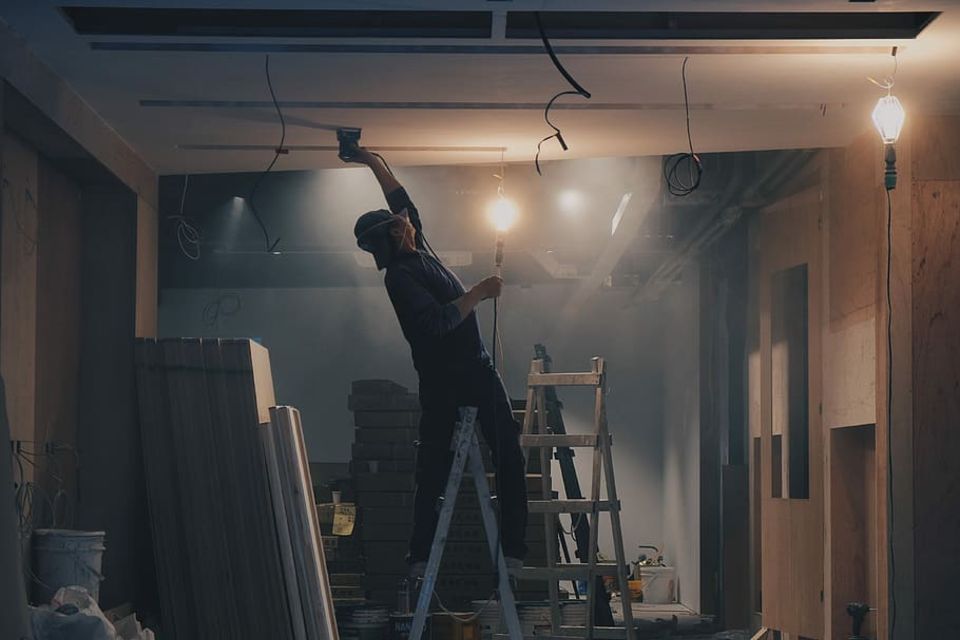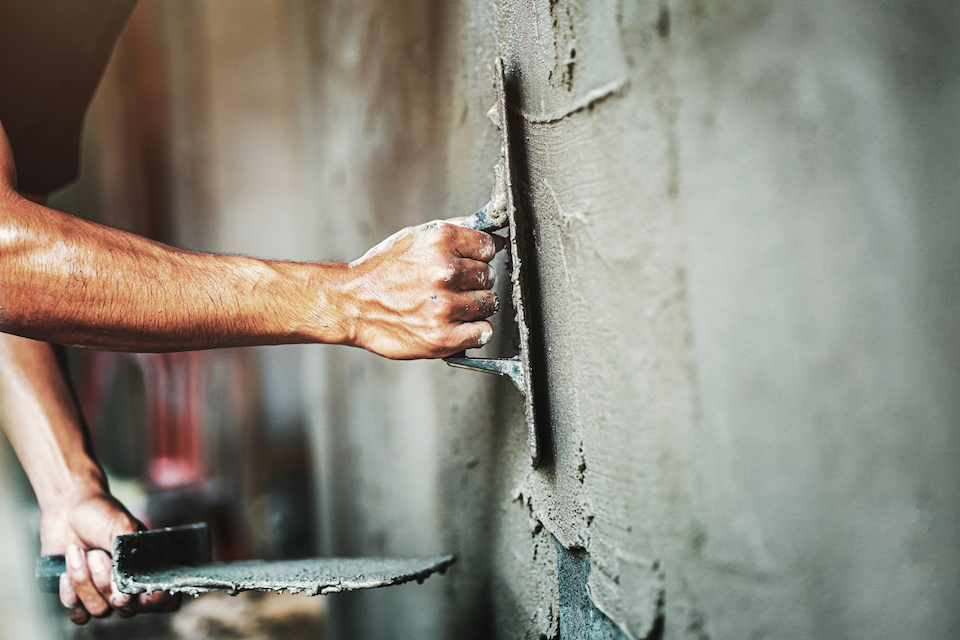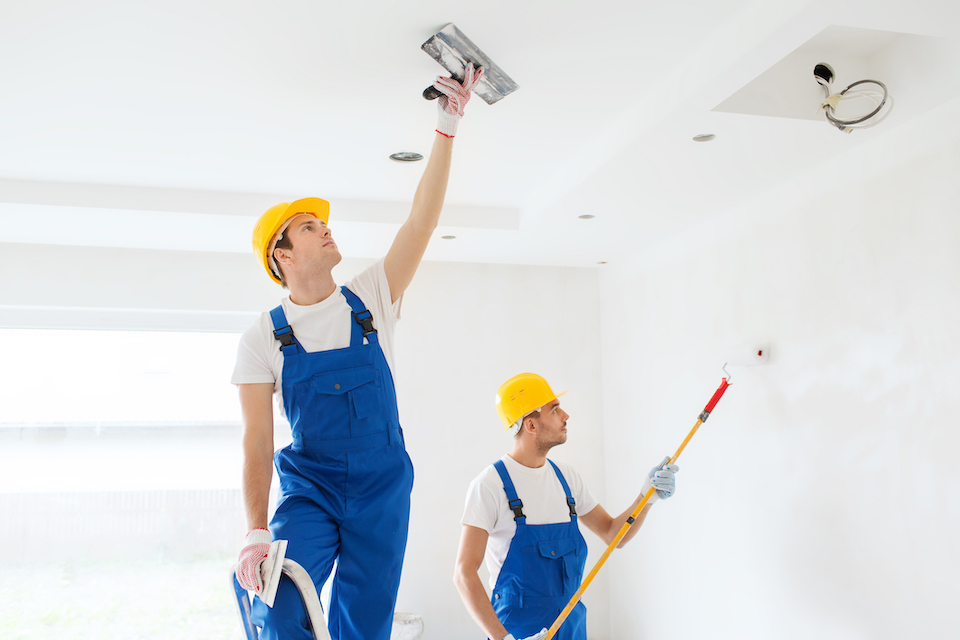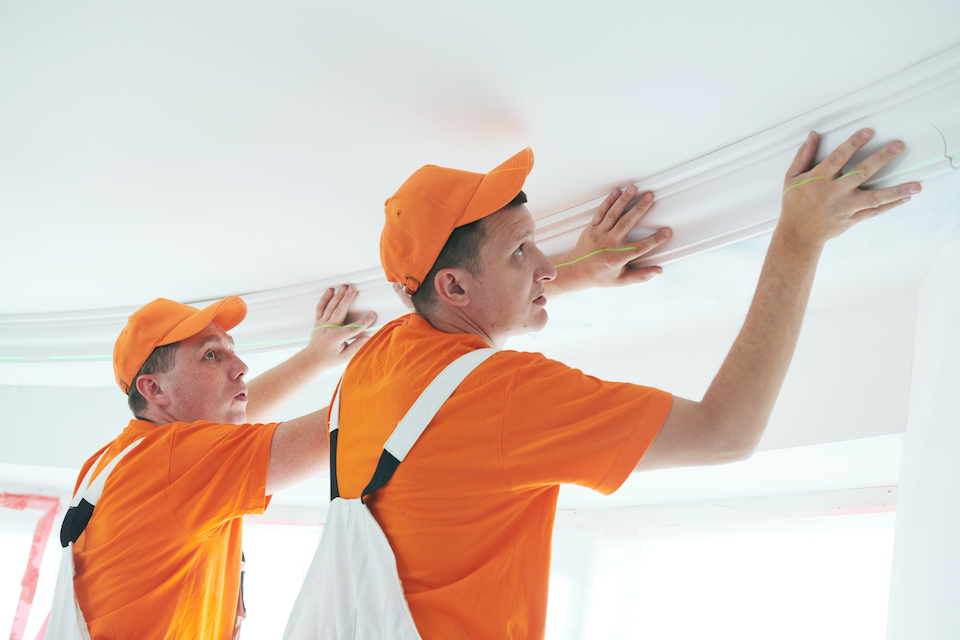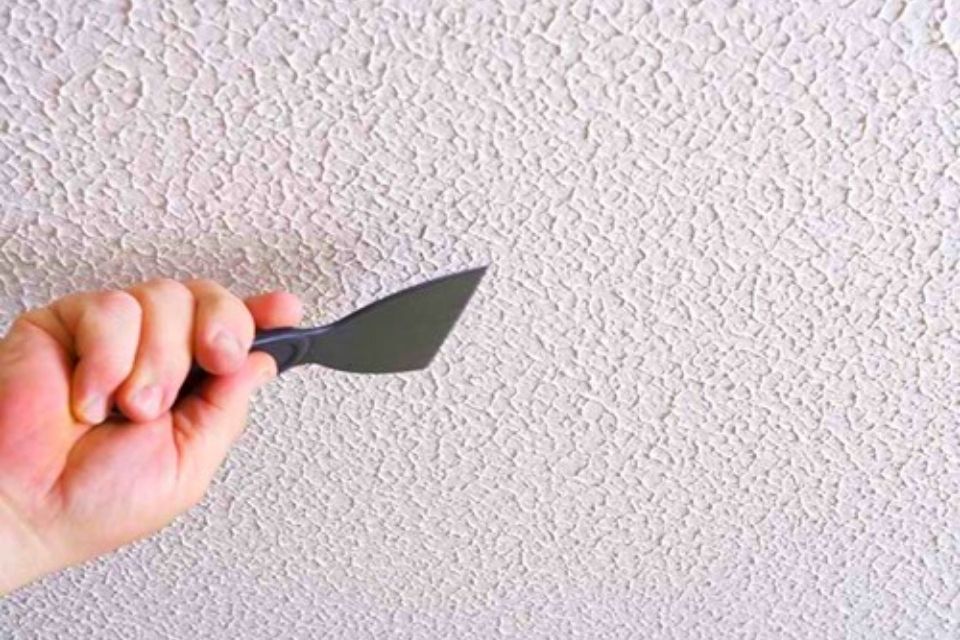Introduction to Plasterboard
Finding the right plasterboard is vital for safety and design. It is also important if you want to maximise certain qualities of the walls or/and ceiling such as their ability to contain sound, repel moisture or prevent the spread of fire.
In this plasterboard guide, we will discuss the various types of plasterboard and what their uses are as well as exploring topics such as the size and thickness of plasterboard.
Our guide will be helpful if you intend to plaster a wall or ceiling or if you want to simply expand your knowledge of the subject. If you need plasterboard disposal, the LoveJunk marketplace can help.
What is Plasterboard?
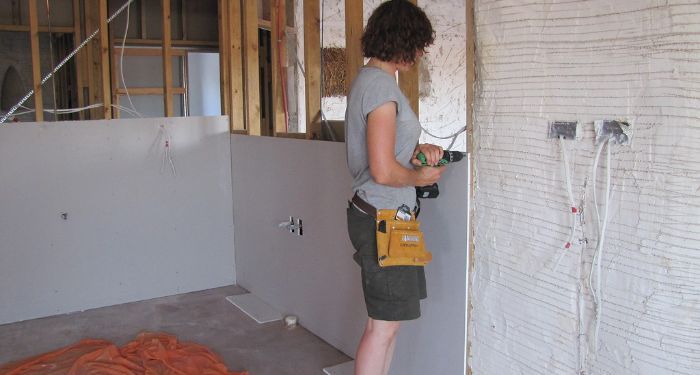
For this section, we will discuss what plasterboard is. We will also answer questions such as what plasterboard is used for, what it’s made from and how long it’s been in use.
Plasterboard or drywall is a panel of material which tends to be pressed between a backer and a facer. It is utilised in the making of ceilings and interior walls.
Plasterboard consists of calcium sulphate dihydrate or gypsum. An early form of plasterboard was invented in the 1880s.
Plasterboard rose to prominence during the second half of the 1910s and through the 1920s. Plasterboard offers a good finish to a wall with the help of plasterboard tape although wet plastering is used quite frequently in the construction industry.
Plasterboard is one of the easiest forms of plaster to use. However, many other types of popular plaster exist. Hardwall plaster and bonding plaster are examples of popular and easy to use forms of plaster which are arguably easier to utilise.
Types of Plasterboard
We will now discuss some of the different types of plasterboard. For this section, we will discuss drywall types including insulated plasterboard and fire resistant plasterboard.
For your plasterboard of choice, you may choose to find the best plasterboard fixings. Plasterboard fixings are used to support the drywall.

What is Water Resistant Plasterboard?
Moisture resistant plasterboard should be used in kitchens and bathrooms. You might also choose to install this type of plasterboard in sheltered positions for external soffits.
Water resistant drywall contains additives which are used to prevent moisture accumulation on the wall. These additives can be found in the core of the plasterboard.
Installing the incorrect type of plasterboard in a bathroom or kitchen can leave it vulnerable to water damage. The drywall could weaken and deteriorate with time as a result.
What is Insulated Plasterboard?
A popular form of drywall is insulated plasterboard or thermal plasterboard. It is designed to keep the heat in. Its ability to contain heat is achieved with the addition of a thermal insulation board which is attached to the back of the plasterboard.
They are combined together to form a single sheet and create insulation plasterboard. Insulated plasterboard can also act as a money-saving approach to insulating your walls.
What is Acoustic Plasterboard?
Acoustic plasterboard is designed to minimise noise transmission between rooms. This type of soundproof plasterboard tends to have a higher density than most drywalls. It helps to contain noise within a given room.
Acoustic plasterboard has a thickness of about 12.5mm which reduces the ability of noise to travel through the ceiling and walls. It’s possible to improve its sound insulation ability further by reinforcing it with soundproof material such as mineral wool or fibreglass.
What is Fire Resistant Plasterboard?
As the name suggests, this type of plasterboard resists fire although its effectiveness varies depending on the fire performance rating of each product.
Some products of fire resistant plasterboard may be entirely fireproof while others may avoid catching on fire for several hours. Fire resistant plasterboard should have a minimum resistance time of half an hour to two hours.
Glass fibres and other additives give this form of drywall its fire-resistant properties.
What is Impact Resistant Plasterboard?
Impact resistant plasterboard is designed to protect itself from physical damage. Its durability, strength and load bearing capacity are improved by its high density and the inclusion of various additives.
The British Standard BS 5234 is used as a means to measure the ability of such plasterboard. Ideally, you will want to find an impact resistant plasterboard with a high rating based on these measures.
What Size is Plasterboard?
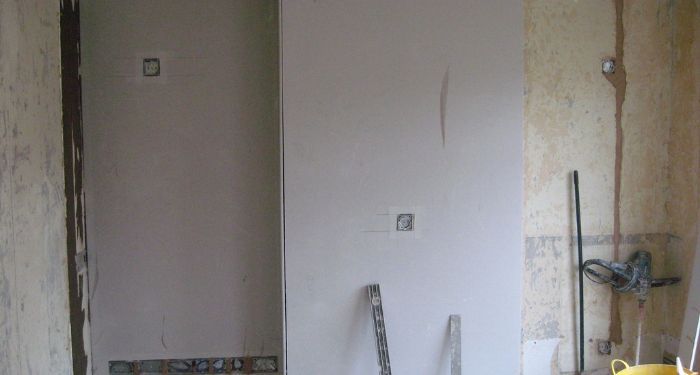
Plasterboard can be bought in various different sizes. In this section, we will discuss what plasterboard sizes you can purchase, whether it depends on the type of plasterboard and what size of plasterboard is ideal for ceilings and walls.
Plasterboard sheets tend to have a range of 0.9 to 1.2 metres in width and a range of 1.8 to 3.6 metres in length.
Most plasterboard has a thickness of 9.5mm or 12mm. However, plasterboard with other variations of length, width and thickness exist. What size plasterboard you will need will also vary depending on the type of plasterboard in question.
Fire resistant drywall for example, may have a plasterboard thickness of 15mm. For a standard wall, you should purchase plasterboard with a thickness of 12mm and for a ceiling, the preferable thickness of drywall is around 12.5mm.
For a bathroom ceiling, you should choose a plasterboard with a thickness of either 12mm or 12.5mm.
How Thick is Plasterboard?
For this section, we will discuss the thickness of plasterboard. Plasterboard tends to come with a thickness of 9.5mm or 12.5mm. However, you can purchase plasterboard with other levels of thickness.
Plasterboard with increased thickness may be used for purposes of insulation, protecting against damage or to prevent noise transmission between rooms.
Fireproof plasterboard can have a thickness of up to 15mm. The ideal plasterboard thickness for the walls and ceiling in a given room can also vary.
How Much Weight Can Plasterboard Take?
Before purchasing plasterboard, you should know how great its load-bearing capacity is. We will discuss this and look at topics such as the weight that a nail in a drywall can hold.
Plasterboard walls can generally hold around 20kg/m² in weight although it varies depending on what plasterboard you purchase.
A nail in a drywall will likely only hold a few kilograms of weight. Certain types of plasterboard will have a greater strength due to the materials used.
Some plasterboard products are better at holding weight than others in accordance with their design. The size and thickness of the plasterboard can also influence its load-bearing capacity.
What Plasterboard to Use for Bathroom?
A bathroom requires moisture resistant plasterboard, which we will look at for this section. We will discuss the utilisation of this type of plasterboard and why it should be used for a bathroom.
Moisture or water resistant plasterboard is the best and only appropriate type of drywall to use for a bathroom.
Bathrooms need water resistant plasterboard to prevent water accumulation as other types of plasterboard would become damaged and weakened from moisture.
This type of drywall has liners designed to repel water and silicone additives, both of which protect against water damage.
What Plasterboard to Use for Ceilings?

We will now discuss what type of plasterboard you should use for ceilings. We will also explain why this type of drywall should be employed. Regular plasterboard or wallboard is the best first choice when it comes to ceilings.
You also want to ensure that the wallboard you purchase is of the right thickness for your ceiling. If it is a bathroom or kitchen ceiling, then you should employ water resistant plasterboard as this will protect against moisture damage.
If you have a thin ceiling, you should use acoustic plasterboard to reduce the ability of sound to travel between the room and the one directly above it.
What Are Plasterboard Screws?
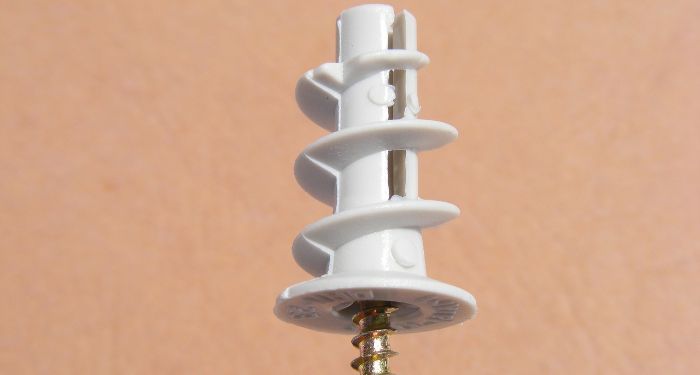
We will now discuss plasterboard screws (drywall screws). These types of screws have countersunk, pozidriv heads and tend to be black. Different lengths of plasterboard screws should be used depending on the thickness of the plasterboard.
If the drywall has a thickness of 9.5mm, the screws should be 32mm long. For a drywall with a thickness of 12.5mm, use screws with a length of 38mm.
Plasterboard screws are distinct from most screws. They are generally made of case-hardened steel and are designed specifically for use in plasterboard work.
How to Cut Plasterboard
For this section, we will look at how you can cut plasterboard. We will also delve into topics such as the necessary tools and safety equipment.
The best way to cut plasterboard is with a regular plasterboard saw. You will need a straight edge, Stanley knife, pencil and a measuring tape.
You may also choose to utilise a wall board saw as a plasterboard cutter, especially for cutting shapes out of the middle of an area of plasterboard.
In terms of safety equipment, you can wear cut-resistant gloves. To cut plasterboard, first carefully mark the line or lines you intend to cut with a pencil and straight edge. Cut through the line and tidy any imperfect cuts with a rasp or plasterboard plane if you wish.
Failure to cut plasterboard in the correct way can result in unintended damage to the drywall or an insufficient cut.
FAQs
Q: Why is plasterboard hazardous waste?
A: Plasterboard is considered hazardous waste since the gypsum present can lead to toxic hydrogen sulphide gas when disposed of. This can happen if it mixes with biodegradable waste.
Q: How much does plasterboard weigh?
A: Plasterboard usually weighs between 600 and 1000 kg/m³.
Q: Which side of the plasterboard do you plaster?
A: You should plaster the white side of the plasterboard.
Q: Where can I buy plasterboard?
A: You can purchase plasterboard from DIY stores such as through their online stores. This includes but is not limited to Wickes, B&Q, Jewson and BuildBase. You can also buy drywalls through online stores like eBay.
Q: How long does it take to plaster a ceiling?
A: To plaster a small ceiling, it should take 6-12 hours, for a medium ceiling, it will take around 8-12 hours while for a large ceiling, the job may take around 2-3 days.
Sources
- http://gypsumtogypsum.org/gtog/plasterboard-systems/
- https://propertyworkshop.com/plasterwork/plaster/
- https://www.designingbuildings.co.uk/wiki/Dry_lining
- https://www.noisestopsystems.co.uk/shop/wall-soundproofing/acoustic-plasterboard-12-5mm/
- https://www.building-supplies-online.co.uk/building-materials/plasterboard-plaster/plasterboard/fire-resistant-plasterboard.html
- https://www.insulationexpress.co.uk/plasterboard/impact-resistant-board
- https://www.insulationsuperstore.co.uk/browse/plasterboard.html
- https://www.building-supplies-online.co.uk/building-materials/plasterboard-plaster/plasterboard/fire-resistant-plasterboard.html
- https://www.countrystylerecycling.co.uk/the-dos-and-donts-of-plasterboard-disposal/
- https://www.british-gypsum.com/products/gyproc-wallboard

